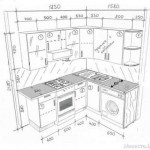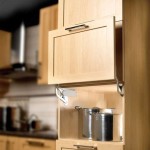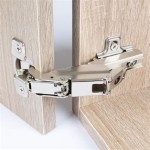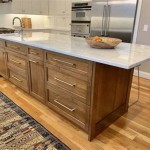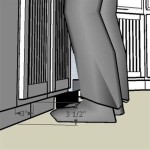How To Get Nicotine Stains Off Kitchen Cupboards
Nicotine stains can significantly detract from the appearance of kitchen cupboards, leaving a yellowish-brown film that clings stubbornly to surfaces. These stains result from the accumulation of nicotine particles in the air, which then settle and adhere to cabinets, especially in areas with poor ventilation. Removing these stains requires a diligent approach and the right cleaning agents to effectively lift the discoloration without damaging the cupboard's finish.
Assessing the Cupboard Material
Before attempting any cleaning method, it is crucial to identify the material of the kitchen cupboards. Different materials require specific cleaning approaches to avoid damage. Wood, laminate, and painted surfaces each react differently to cleaning solutions, and using the wrong product can lead to discoloration or stripping of the finish. For instance, harsh chemicals may damage the protective layer on laminate, while excessive moisture can warp wood.
Preparing the Cleaning Solution
Several effective cleaning solutions can tackle nicotine stains. A mixture of warm water and dish soap serves as a good starting point for mild stains. For more stubborn discoloration, a solution of white vinegar and water can be used. The acidity of the vinegar helps to break down the nicotine residue. Alternatively, a specialized cleaning product designed for kitchen grease and grime may be effective, but it is important to test any cleaning solution in an inconspicuous area first to ensure it does not damage the cupboard finish.
Cleaning Tools and Techniques
The right cleaning tools are essential for efficient stain removal. Microfiber cloths are highly effective as they are absorbent and gentle on surfaces. Sponges can be used, but they should be soft and non-abrasive to avoid scratching. A spray bottle is useful for applying cleaning solutions evenly. When cleaning, gentle circular motions are recommended to lift the stains without damaging the surface. For stubborn stains, allowing the cleaning solution to dwell for a few minutes before wiping can improve its effectiveness.
Tackling Stubborn Nicotine Build-up
Heavily stained cupboards may require more intensive cleaning methods. A paste of baking soda and water can be applied to the stain, allowed to dry, and then gently scrubbed away. This method utilizes the mild abrasiveness of baking soda to lift the ingrained nicotine. For extremely stubborn stains, a solution of trisodium phosphate (TSP) and water can be used, but it's crucial to wear gloves and ensure proper ventilation as TSP is a strong cleaning agent. Always test TSP in an inconspicuous area first, as it can damage certain finishes.
Protecting Cleaned Cupboards
Once the nicotine stains have been successfully removed, protecting the cupboards from future build-up is crucial. Regular cleaning with a mild soap and water solution can prevent nicotine from accumulating. Improving ventilation in the kitchen can also significantly reduce the settling of nicotine particles. Consider using an exhaust fan while cooking or opening windows to allow fresh air to circulate. Additionally, designating smoking areas outside and away from the kitchen can prevent future staining.
Preventing Future Nicotine Stains
Prevention is always the best approach. Eliminating smoking indoors is the most effective way to prevent nicotine stains on kitchen cupboards. If smoking indoors is unavoidable, designating a specific smoking area with good ventilation can minimize the spread of nicotine particles. Regularly cleaning kitchen surfaces, including cupboards, can also prevent the build-up of nicotine and other residues. Air purifiers with HEPA filters can help to remove airborne nicotine particles, further protecting surfaces from discoloration.
Addressing Specific Cupboard Materials
Different cupboard materials require nuanced cleaning approaches. For wood cupboards, it is essential to avoid excessive moisture, which can cause warping or damage to the finish. Use wood-friendly cleaning solutions and dry the surfaces thoroughly after cleaning. Laminate cupboards are generally more resistant to moisture, but harsh chemicals can damage the protective layer. Painted surfaces can be cleaned with mild soap and water, but abrasive cleaners should be avoided to prevent scratching. Always test any cleaning solution in an inconspicuous area before applying it to the entire surface.

Housecleaning Tips How To Clean Nicotine Stains

How To Clean Kitchen Cabinets Everyday Skate

How To Clean Cigarette Smoke Damaged Cabinets Hunker

How To Get Rid Of Kitchen Cabinet Stains

How To Clean Stains From Painted White Kitchen Cabinets Southwest

Ultimate Guide To Cleaning Kitchen Cabinets Cupboards Foodal

How To Get Rid Of Kitchen Cabinet Stains

How To Clean Kitchen Cabinets In Under 10 Minutes

Restoring Kitchen Fire Damaged Furniture

3 Ways To Clean Laminate Cabinets Wikihow

